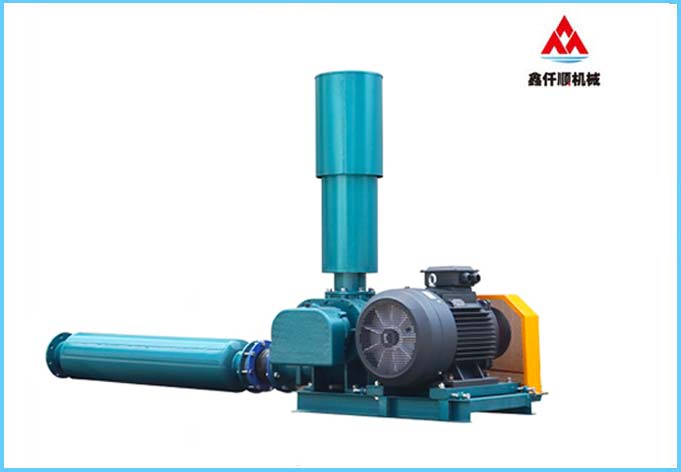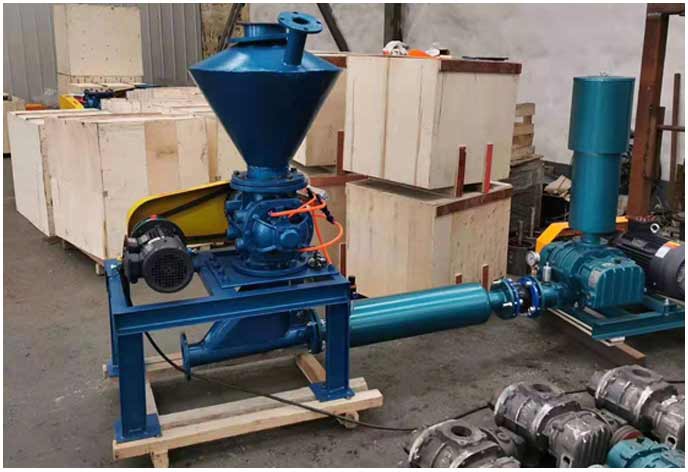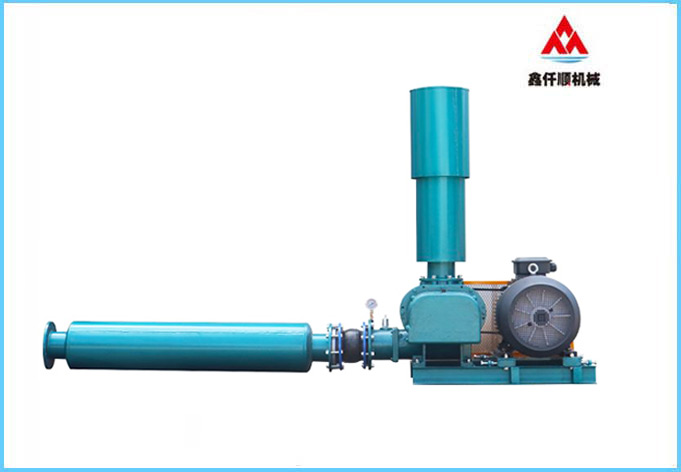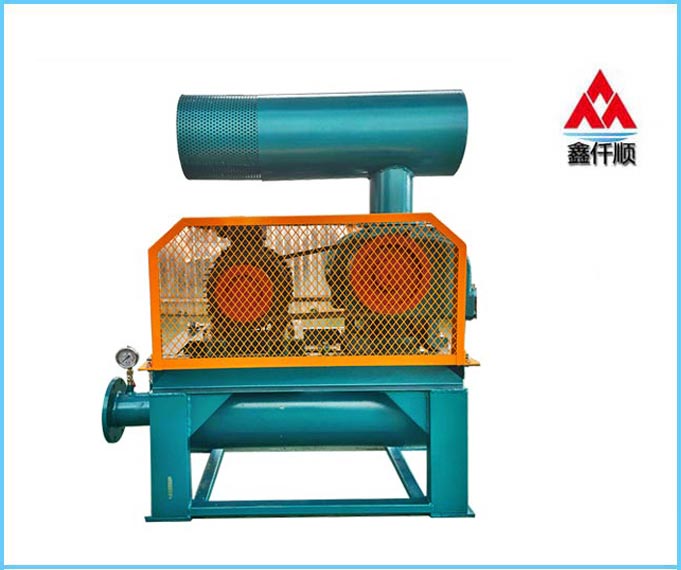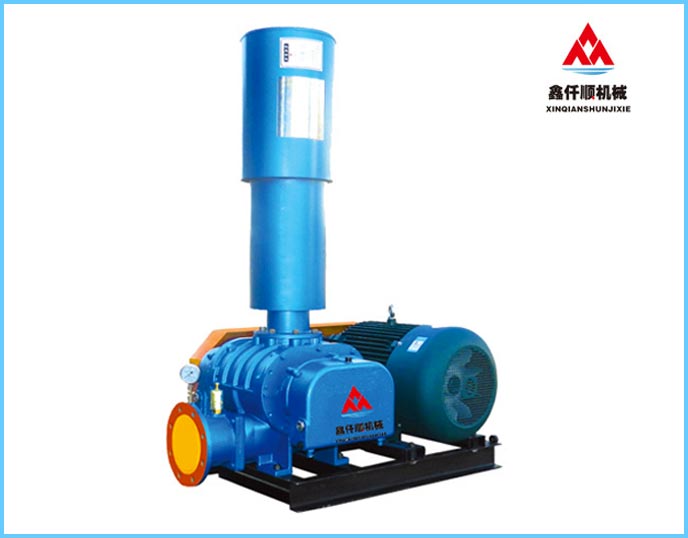A certain clearance shall be kept between two impellers of Roots blower, between impellers and wallboard, and between impellers and casing to ensure normal operation of Roots blower. If the clearance is too small, the fan will generate vibration, heat and abnormal sound.

If the positioning dimension of the positioning pin is accurate, it is because the clearance between the impellers, between the impellers and the wallboard, between the impellers and the casing of the roots blower has not been adjusted according to the clearance adjustment method of the roots blower, which causes the clearance between the impellers or between the impellers and the wallboard, between the impellers and the casing of the roots blower to be too small, It causes the vibration, heating and abnormal sound of roots blower, which seriously affects the smooth operation of the blower.
The reason why the clearance is too small is that during the maintenance of the equipment, the maintenance personnel did not adjust the positioning pin between the gear ring and the gear hub according to the gear fitting tolerance, center distance tolerance and the center distance deviation of the gearbox shaft hole, resulting in inaccurate positioning size of the positioning pin, thus affecting the gear side clearance and the clearance between the impellers.
1. Air volume adjustment
The effect of turning down the inlet or outlet valve to adjust the air volume is small, because it only changes the pressure difference between the inlet and outlet, thus increasing the amount of air leaking back to the inlet from the gap. Unless the pressure difference increases significantly, the amount of more leakage is very small. This is of little value for adjusting the air volume, but it can significantly increase the power consumption of the fan. In particular, turning down the outlet valve of the fan is dangerous to the fan. Turning down the inlet valve to adjust the air volume is also like turning down the outlet valve. A large negative pressure at the inlet will change the state of the air at the inlet of the fan, so that the air volume converted to the standard condition is less. Therefore, the regulating effect of turning down the inlet valve is greater than that of turning down the outlet valve. However, from the calculation, the increase of power consumption is more serious and undesirable.
The auxiliary line is used to regulate the air volume so that some gases return from the outlet to the inlet through the auxiliary line. The air volume of the fan is not reduced, but the air volume of the whole system is reduced, the resistance of the whole system will also be reduced, and the power consumption of the fan will be reduced. Therefore, it is reasonable to use the auxiliary line to regulate the air volume. However, measures must be taken to prevent the inlet and outlet valves of the fan from automatically closing, or the auxiliary line valve from opening and closing, otherwise danger (pressure and current forcing up) or unnecessary load increase or decrease will occur. Because the vibration of this fan is large.
Roots blower performs adiabatic compression on the gas, and the temperature of the gas will rise after passing through the blower. Some gas returning to the inlet will raise its inlet temperature, thus affecting the outlet temperature. Therefore, the fan shall be operated under full load or close to full load as far as possible to avoid long-term low load operation.
2. Safety function of secondary line
Under the system resistance condition of sulfuric acid production, if there is no auxiliary line, no matter whether the inlet and outlet valves are open or closed, it is difficult or dangerous to start the fan. Moreover, some unexpected accidents may occur if there is no auxiliary line. For example, if the power supply system trips and the fan stops, but the switch of the fan motor does not trip due to failure, the fan will start automatically when the power supply system resumes. If the auxiliary line valve of the fan is not opened at this time, let alone the impact on the system, excessive starting current of the fan itself will also cause a series of bad consequences, even burning the motor. This is especially true when multiple fans are running in parallel as described below. Therefore, we should not only consider the auxiliary line of the fan as a means of starting and regulating, but also see its protective effect on the fan. No matter what causes the fan to stop, always develop the habit of opening the auxiliary line valve first (which is often ignored in emergency treatment) to avoid unnecessary trouble. Even for planned shutdown, the first step is to open the auxiliary line valve first, and then close the inlet valve.
Some plants have several production systems, and the fan outlet has a connecting pipe. If the connecting valve is opened by mistake, the gas of the operating system will often be sent to the blower that stops operation but the inlet and outlet valves are not closed tightly, causing it to reverse. At this time, the bearing and gear are most likely to be damaged because the oil pump stops supplying oil or the oil pump coaxial with the fan reverses without oil supply. If the auxiliary line is fully opened, this phenomenon can be greatly alleviated, even if the connecting valve that is opened by mistake is not opened much, it may be avoided.
3. Condition when gas outlet is blocked
Because the air supply volume of the fan is not affected by the increase of the outlet pressure, for example, the air supply from the fan outlet to the front of the absorption tower chimney vent is blocked or blocked, so that when the air passage at the fan outlet is cut off, it is dangerous to the fan itself and the system. At this time, the fan may be damaged. If the protection system is poor, the motor can also be burned, and the weak equipment will be damaged. For example, due to the large diameter of the converter, the joint between the top cover and the shell is easy to be cracked. When the tower bottom is used as a circulating acid storage tank and there is a small acid mixing tank at the outlet, the acid will also be ejected from the top of the small acid mixing tank: if the blocked part is behind these equipment. Therefore, all possible valves on the main pipeline from the fan outlet to the smoke outlet must be carefully closed. For example, the valves on the main pipe between the inlet and outlet forks of the electrified furnace, and the butterfly valves on the absorption tower with exhaust gas recovery equipment. The pipeline to be accessed must be opened before the valve in the main pipeline can be closed. When closing, someone must pay attention to the change of fan outlet pressure and take measures to prevent the valve from automatically closing.
4. Gas receiving condition before fan inlet
The main pipeline and equipment between the furnace and the blower inlet are blocked, which leads to more dangerous consequences when the negative pressure at the blower inlet rises. Because the equipment in front of the fan inlet is under external pressure, many of them are made of plastic and lead materials with poor strength, which are easy to lose stability and deform. Another phenomenon is that when a certain equipment before the inlet of the fan is blocked from discharging liquid, the internal liquid level rises, partially submerging the lower air passage, making the gas flow blocked (such as the phenomenon of drying tower lifting acid) to a certain extent, the liquid at the bottom of the device can vibrate and shake back and forth at the bottom of the device. At this time, we can see that the pressure of the whole system (mainly before the inlet of the fan) jumps violently, the current of the fan motor fluctuates, the noise is abnormal, and the vibration is intensified, which is very frightening. At this time, the auxiliary line valve of the fan must be opened in time to reduce the pressure fluctuation amplitude, so as not to damage the equipment, especially the equipment under external pressure. Then quickly find out the equipment with poor drainage and solve it. The reason is easy to find out because there are not many liquid discharging equipment before the fan inlet. It is also easy to analyze the pressure. The negative pressure behind the blocked equipment fluctuates upward, while that in front fluctuates downward. The boundary is very clear.
5. Reverse problem
Turn on the standby fan in reverse. It is more difficult for roots blower than centrifugal blower to make the system air volume (load) not change significantly during operation.
Since two roots blowers have six valves in total, there are two more than two centrifugal blowers. When the standby fan is started, the auxiliary line valve is generally open, and the inlet and outlet valves are closed. After startup, only the inlet valve of the standby fan can be opened first. If the outlet valve is opened first for operation, the air from the fan will return to the inlet header through the auxiliary line of the standby fan, which will sharply reduce the air volume of the whole system. In addition, if the load of standby fan is increased too fast, the system load will rise sharply. Therefore, after the standby fan is started and the inlet valve is fully opened, open its outlet valve, turn down its auxiliary valve, turn up the auxiliary valve of the fan to be stopped, and turn down its outlet valve. The four movements should be carried out at the same time to ensure the air volume is stable when reversing. Until the standby fan completely replaces the fan to be stopped, at this time, the auxiliary line valve of the fan to be stopped is fully opened and the outlet valve is closed, the machine can be stopped and the inlet valve is closed, or the inlet valve is closed first and then the machine can be stopped. Of course, the procedures can be simplified after skilled operation.
6。 Measuring system resistance with roots blower
Before a new system is built and ignited, it is necessary to know the system resistance, so as to master the air pressure for system heating and formulate the operating indicators after start-up. We can draw air to increase the fan load, measure the inlet and outlet temperature, pressure and pressure of each equipment, because the air volume is known when the fan is fully opened, which can be converted into the standard state air volume, so that the system resistance equivalent to how many days of output can be converted. The resistance at operating temperature can also be converted by using the formula for calculating resistance and the system of gas velocity (i.e. gas volume), gas gravity and temperature. The change of resistance value is roughly in direct proportion to the change of absolute temperature, that is, the same is true for measuring the resistance of each equipment.
I believe that after reading the above, you should also know how to make Roots blower operate safely and smoothly. I hope it will be helpful to you.
Text term label: Roots blower
Link to this article: //wuhanzhcs.com/html/news/n02/647.html



